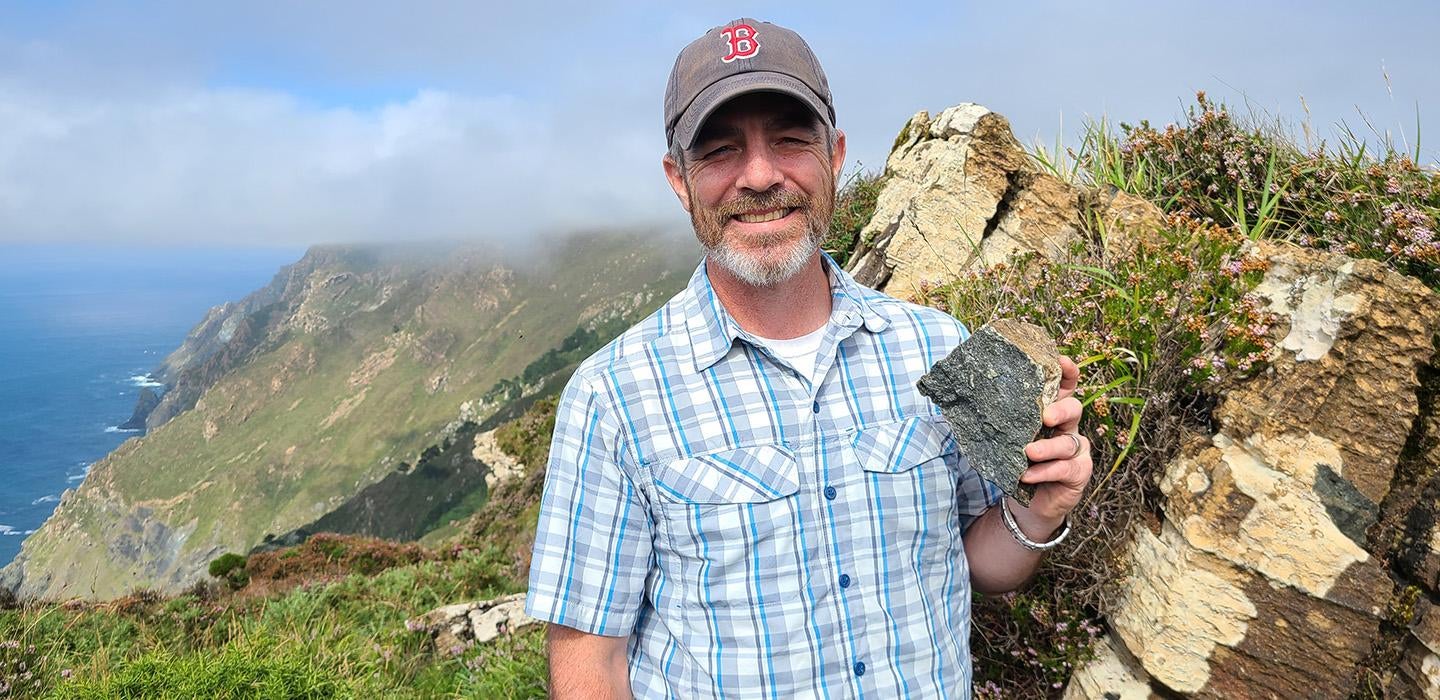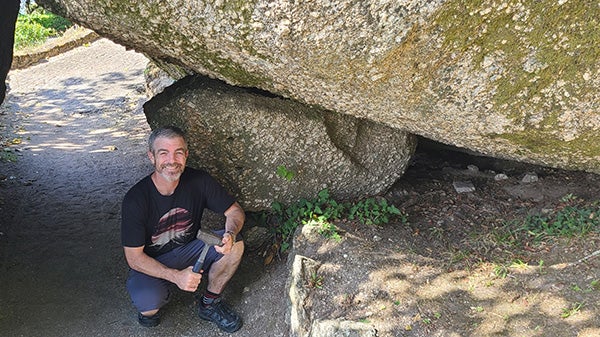
Subscribe to Pittwire Today
Get the most interesting and important stories from the University of Pittsburgh.Pennsylvania and Portugal have more in common than you might realize — and University of Pittsburgh at Johnstown Associate Professor Ryan Kerrigan can show you why.
Sponsored by a Fulbright fellowship and a Pitt Momentum Fund Priming Grant, the geologist is spending five months abroad this fall gathering samples from the Bragança and Morais massifs in Portugal’s northern region. Later, these rocks will undergo chemical analyses to determine the concentration of their major, minor and trace elements.
While understanding our geological landscape is important at face value, Kerrigan said knowing more about how mountains came to be also helps scientists determine which regions hold mineable deposits for minerals we use daily.
He’s specifically focused on ultramafic rocks, which are rich in magnesium and iron and contain elevated amounts of valuable elements such as nickel, chromium and platinum — essential materials used to build electronics.
“I train my students to be able to enter the workforce and understand where geologic elements come from and how to find them,” he said. “Because we are never going to run out of the need for more materials.”
But how does that connect Pennsylvania to Portugal?
More than 330 million years ago, Earth’s seven continents formed a singular mass — a supercontinent called Pangea — and the Iberian mountains of Portugal were adjacent to the Appalachian Mountains of the United States.
“The rocks tell a story. They help us understand the full scope of events that influenced both mountain belts and help us better project future tectonic events and the overall dynamics of our Earth as a system,” said Kerrigan.
[Learn more about research opportunities at Pitt-Johnstown]
Scientists have a few hypotheses to explain how the mountains formed. Some posit that the Bragança and Morais massifs, or clusters of mountains, are a result of the Earth’s crust shifting sideways and downward. Other scientists believe the massifs stemmed from a tectonic collision between today’s North America and Europe. The hypothesis Kerrigan most adheres to is the massifs may be a result of the Earth’s crust stretching as Pangea split apart and the Atlantic Ocean formed between North America and Europe.
Determining the geochemical signatures will allow him to test these hypotheses; a rock’s trace elements correspond to where it was created, imbuing a kind of fingerprint.
In October, two of Kerrigan’s undergraduate students, Chris Howard and Aleya Shreckengost, are joining him across the sea for a week of hands-on field work.
“Working alongside Dr. Kerrigan is an opportunity for me to refine the skills I’ve gathered from my classes,” said Howard. “Surrounded by professionals, I’ll have the chance to ask questions and explore different futures in geology.”
Kerrigan hopes his drive to understand the Appalachians’ geologic connections to the rest of the world will take him beyond Portugal, too: He’s proposed future research that would send him to the Atlas Mountains in Morocco, a range that’s also similar to the Appalachians in epoch and composition, and yet another part of the story of how Pennsylvania’s peaks came to be.
— Nichole Faina, photography courtesy of Kerrigan



